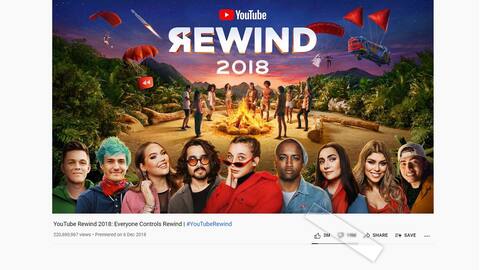YouTube starts hiding public video dislike count across its website
What's the story
YouTube's like and dislike buttons have been a staple of the platform since its inception. However, the platform has now decided to hide the number of dislikes from the public to combat harassment and dislike attacks targeting smaller creators. The feature started rolling out yesterday and soon, only creators will be able to view the dislike count on their videos through YouTube Studio.
Context
Why does it matter?
YouTube viewers decide whether or not to dislike a video sometimes based on the content and sometimes based on the like-to-dislike ratio and comments from other viewers. However, the latter could set off attacks targeting creators where viewers just dislike a video because the majority did. YouTube believes that by hiding the dislike count, it can stop creators from being disliked into insignificance.
Moderation
YouTube says move will foster respectful interactions on the platform
In a blog post, YouTube reasoned that by hiding the dislike count, it would deprive ill-intentioned viewers of the satisfaction of watching the dislike count climb. Mildly put, YouTube said this move would promote "respectful interactions between viewers and creators." However, creators will still be able to see the dislike count for every video via YouTube Studio.
Creators first
Move could be hugely beneficial to creators' mental health
We hope once the dislikes are hidden, YouTube creators will interpret the dislikes as a true metric of whether or not viewers liked the video. Additionally, we suspect it could also do YouTube a favor by hiding the number of dislikes on its 2018 YouTube Rewind video. That is the most disliked video in YouTube history and forced it to eventually stop making Rewinds.
Alternatives
Hidden dislikes could steer unwary viewers towards promotional, irrelevant content
However, some may argue that YouTube could have adopted alternate approaches such as asking people why they dislike a video or disabling the dislike button until they watched a certain percentage of the video. Hiding the dislike count could help creators' mental health but could also lead to users watching irrelevant or unworthy videos and content created just for marketing.
